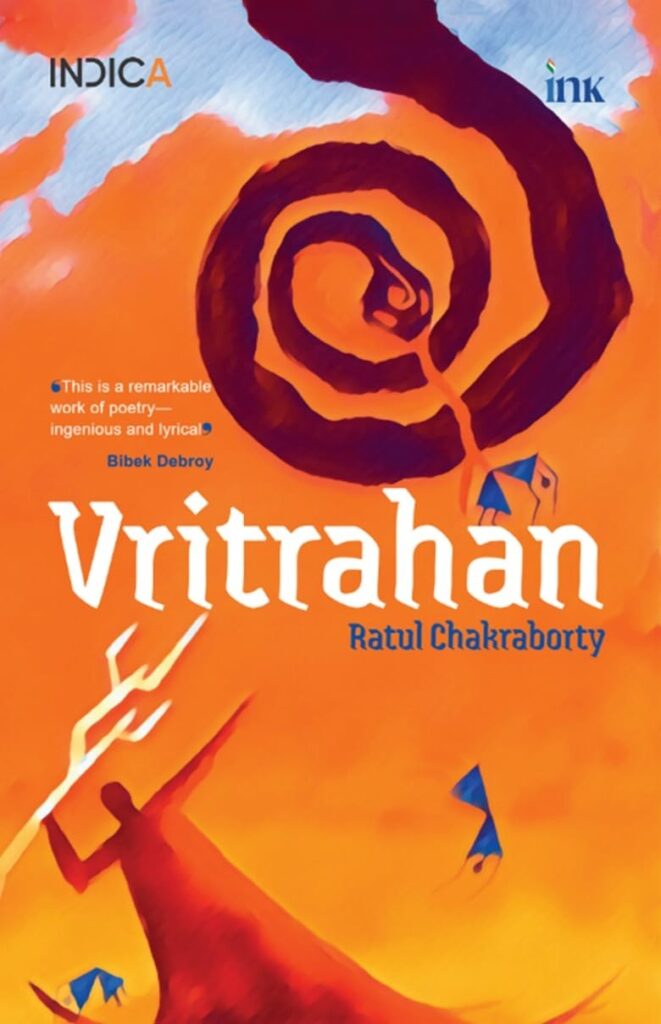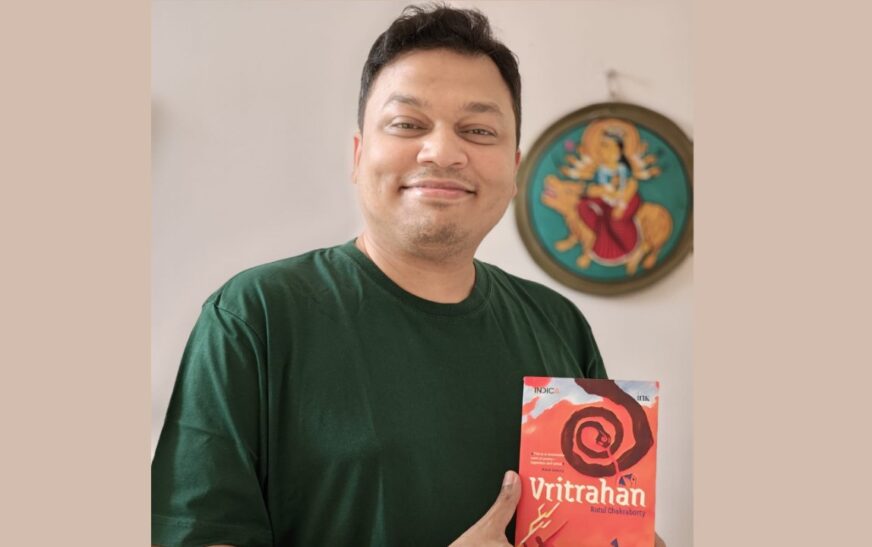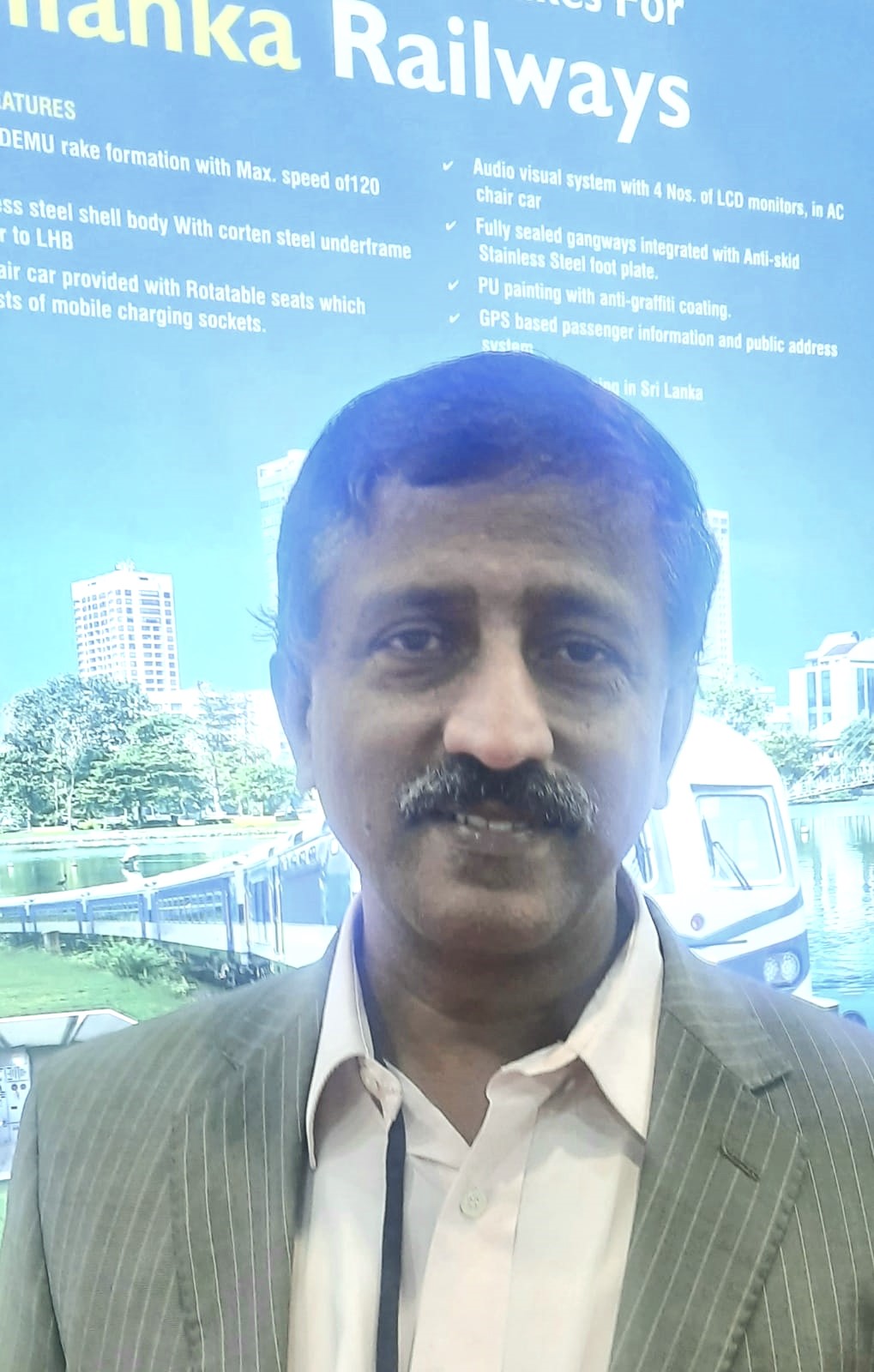Vritrahan boldly reimagines the ancient saga of Indra’s cosmic clash with the serpent Vritra, transforming this mythic confrontation into a compelling synthesis of classical narrative and literary modernism. With poetic precision, the work immerses readers in a distinctly Bharatiya cosmology—where heroism collides with moral ambiguity, and the eternal struggle between cosmic order and chaos unfolds in a liminal realm. Here, even the divine powers are not immune to consequence.
Through this timeless battle, Vritrahan probes the elemental dualities that define existence—good and evil, creation and destruction, power and responsibility. Written entirely in free verse, the work draws deeply from the oral tradition of katha, where storytelling transcends mere entertainment to become philosophical inquiry. This structure conjures the cadence of an ancient performance, echoing the voices of sages from centuries past.
Seamlessly blending the grandeur of epic with a meditative, modern voice, Vritrahan, published by Ink, emerges as both a triumph of form and a vessel for timeless truths. It challenges, contemplates, and ultimately connects—inviting readers to reflect on the impermanence of power and the inevitability of consequence.
In an exclusive conversation with The Interview World, author Ratul Chakraborty shares the inspiration behind his ambitious reimagining of India’s sacred texts. He reflects on navigating existential dualities, articulates his philosophical lens, and emphasizes how even immortals must reckon with accountability. Most importantly, he discusses how Vritrahan serves not only as a story—but as a message that lingers.
Here are the key takeaways from this compelling exchange.
Q: What inspired you to reimagine the ancient tale of Indra and Vritra in a modern literary form?
A: We remember. That is what makes us human. Memory is not merely a biological function—it is the cornerstone of civilization. When we learned to preserve our memories beyond instinct and inheritance, we birthed culture.
We painted on cave walls, etched clay tablets, danced to primal beats, sang ancestral songs, and composed verses. Through stories, we shaped our worldview. We sought meaning. We created heroes and villains. We attempted to grasp the cosmic order underlying existence.
From this impulse arose the Itihasa-Purana tradition of Bharat—a sacred continuum of memory, meaning, and moral inquiry. It didn’t merely recount events; it wove the threads of knowledge, dharma, and transcendence into timeless narratives.
One such narrative is the tale of Indra and Vritra—an archetype deeply embedded in the Hindu consciousness. Indra, king of the devas, slays his priest Trishira on suspicion of betrayal. In response, Tvashta, Trishira’s father, births Vritra—the great serpent, Ahi—to avenge his son. Vritra overpowers Indra and dams the rivers, plunging the world into drought. Indra must rediscover his strength to defeat Vritra and restore the flow of life-giving waters. Thus, he earns the epithet Vritrahan—the Slayer of Vritra.
Layered with profound symbolism, this myth echoes through the Vedas, Puranas, and myriad Indic traditions.
But today, we live in a world dislodged from such rooted narratives. In the vacuum of postmodern consumerism, people chase dopamine over depth, gadgets over grace, and noise over nuance. I recall someone once asking me for headphone advice. I suggested he spend time listening to music instead. But the goal wasn’t to hear—it was to own. Consumption, not anubhuti, drives our choices.
This loss of rootedness breeds alienation. Global culture reduces individuals to indistinct, anxious cogs—never truly someone.
Here enters Vritrahan—a literary work that seeks to reclaim our narrative space. Rooted in Sanatan Dharma and expressed in English, it is unapologetically Indic in its worldview. Written entirely in free verse, it invites not just readers, but performers, to bring it alive.
More than a book, Vritrahan aspires to spark cultural introspection. It aims to reignite conversations, nurture authentic expression, and disrupt passive consumption. Through its timeless storytelling tradition, it whispers a radical proposition: Remember who you are.
Let it unsettle. Let it awaken. Let it begin.
Q: Vritrahan delves deeply into the dualities of existence—good and evil, order and chaos. How did you navigate these oppositions without falling into simplistic moral binaries?
A: From the chapter, A Ritual of Change in Vritrahan
Chaos fragments into the Many—restless, wild, uncontained. From the Many emerge Two. Duality finds balance, poised in perfect tension. Then, the Two dissolve into the One—complete, self-contained, alone. But even the One cannot endure. It slips into Nothingness.
And from that void, chaos returns.
Is this not the divine rhythm? The heartbeat of all that was, is, and ever shall be? The most elemental miracle of existence?
This rhythm—at once cosmic and intimate—is the eternal dance of transformation. Known as Time, it pulses through the triad of Srishti (Creation), Sthiti (Sustenance), and Laya (Dissolution). It governs not only the physical universe but also the soul’s inner journey. Yet, beneath this perpetual flux lies a deeper unity—a sacred thread that connects all change to a singular truth.
As the Ishopanishad declares:
ईशा वास्यमिदं सर्वं यत्किञ्च जगत्यां जगत्।
“Ishvara pervades all this—everything that moves in this moving world.”
We exist within the cycle of Srishti-Sthiti-Laya (SSL)—yet we also transcend it. We are not merely passive participants; we are divine fragments woven into the infinite fabric of Ishvara.
From this higher vantage point, good and evil cease to be rigid absolutes. They become forces within the dynamic interplay of countless SSL cycles—each cycle shaping, testing, and transforming.
Still, beyond even these ever-turning wheels lies a profound realization—the ultimate truth of Oneness. Every spiritual path, every act of inquiry, seeks this truth: that all beings are but expressions of the same divine source.
In that realization, all polarities dissolve. All contradictions fade. What remains is the unchanging eternal—pure, indivisible, infinite.
Q: Vritrahan presents a distinctly Bharatiya worldview. How do you define this worldview, and why is it important to foreground it in contemporary literature?
A: At its core, our civilization is a tribe of seekers—restless minds and awakened spirits in pursuit of truth. This quest, our Sadhana, forms the heartbeat of the Hindu way of life. Yet in the age of Kaliyuga, the pursuit faces its gravest adversary: Maya. This force of illusion distorts reality itself, clouding perception and breeding Tamas—a paralyzing inertia that deadens both society and self. In my view, Maya is the most potent threat to Hindu civilization, not because it attacks directly, but because it numbs us into inaction.
Maya operates insidiously as a social contagion. It hijacks minds and corrodes institutions, especially those meant to uphold the common good—education, entertainment, and information. These pillars, ideally forming a virtuous triangle, now serve as tools of distortion. When we fail to pass on the right values, tell stories rooted in our identity, or share truthful information, we create a generation adrift—ignorant, rootless, and easily enslaved.
This is the author’s battlefield. Our Dharma demands that we dismantle Maya‘s illusions with fearless truth. Yet destruction alone is not enough. We must also envision. Like the builders of Rama Setu, we must chart a collective journey. Through our words, we must sing the Raag of the Great Bharatiya Dream.
Q: You explore the idea that even immortals are not free from consequence. Could you speak to the philosophical underpinning of this idea and its relevance today?
A: The distinction between Devata and Ishvara may be too intricate for this conversation. Instead, let’s explore a core tenet of the deeply pragmatic Bharatiya worldview—one that shaped one of history’s most enduring civilizations: Karmic Consequences.
The Law of Karma affirms a simple yet profound truth—every sentient being bears full responsibility for their actions. And every action, without exception, has consequences. These may unfold across lifetimes, but they are inevitable. This cosmic cause-and-effect mechanism is not an abstract idea; it’s the very architecture of creation.
But what if actions had no consequences?
At the human level, laws would lose all meaning. Social contracts would collapse. Cooperation—the essence of civilization—would dissolve into chaos. We see the tragic results of this breakdown in failed states across the globe.
Spiritually, it’s even more destructive. Morality becomes obsolete. Without consequence, right and wrong blur into personal opinion. Randomness replaces order, and in a world without harmony, the mind cannot find peace. Without peace, contemplation becomes impossible. And without contemplation, the path to Moksha—ultimate liberation—is lost.
Karma, then, is not a burden but an empowering force. It elevates us, anchors civilization in justice, and lights the way to peace, prosperity, and inner joy—scarce treasures in our times.
Q: What do you hope readers will carry with them after experiencing Vritrahan—emotionally, intellectually, or spiritually? Is there a particular truth or tension you want them to wrestle with?
A: One of the most profound insights I’ve gained from Hindu Dharma is the concept of the interconnectedness of life. The deeper I delve, the more I marvel at the exquisite, intentional design of our civilization—BharatVarsha—that weaves together all forms of life, seen and unseen, into a sacred, living tapestry.
Open a map of Akhand Bharat, overlay it with Shakti Peethas, Jyotirlingas, Dhams, and Teerthas, and a striking pattern emerges. Each region stands as an ecological microcosm—presided over by a deity, guarded by a kshetrapal, and governed by a ritual calendar synchronized with nature’s rhythms. This balance between economic activity and environmental regeneration was not accidental. It was Dharma in motion. Pilgrimage routes bound these regions into a unified civilizational whole—culturally resilient despite a millennium of invasions. And yet, this sacred vision is starkly at odds with today’s relentless obsession with perpetual growth, cloaked in the empty rhetoric of “sustainability.”
Every Hindu ritual begins with a Sankalpa—a mantra that records who, when, where, and why. It is the earliest form of metadata—data about data. Just like a photo’s timestamp and geotag exist apart from its visual content, the Sankalpa places the ritual in space and time with precision. The first time I heard, “Jambudvipe Bharata Varshe, Bharat Khande…”, I had goosebumps. Why did our ancestors take such care? Because they knew—culture emerges not in abstraction, but in response to place, climate, and community.
Yet beneath all diversity lies shared humanity. As Akira Kurosawa observed, “Human beings share the same common problems.” That’s the creative key: universal emotions in local contexts. Whether I write or design games, I strive to evoke that realness—to make stories pulse with truth.








